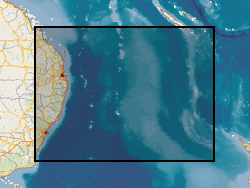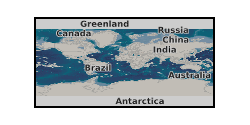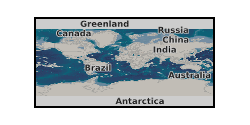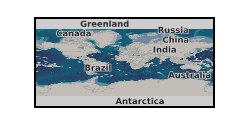Oceanic crust
Type of resources
Topics
Keywords
Contact for the resource
Provided by
Years
Formats
Representation types
Update frequencies
-

Zircon U-Pb data are presented for six plutonic rocks recovered from the Pacific oceanic crust (IODP Hole 1256D). These data constrain the age of the section, as well as the duration of crustal accretion. The data cover the bulk of the plutonic section recovered and were generated during post-cruise research for IODP Expedition 335 (2011-2013; PI Lissenberg). Data collection was done at the NERC Isotope Geosciences Laboratories at the British geological Survey. NERC Isotope Geosciences Facilities award IP-1276-1111. This work resulted from participation in IODP Expedition 335, NERC grant NE/J005592/1
-

Elastic thickness data for Tasmantid Seamounts determined from gravity modelling. Published paper, Richards, Fred & Kalnins, Lara & Watts, A. & Cohen, Benjamin & Beaman, Robin. (2018). The Morphology of the Tasmantid Seamounts: Interactions Between Tectonic Inheritance and Magmatic Evolution. Geochemistry, Geophysics, Geosystems. 10.1029/2018GC007821.
-

Two published papers: Modelling the Lost City Hydrothermal Field: Influence of topography and Permeability structure. https://doi.org/10.1111/gfl.12151: and Rapid generation of reaction permeability in the roots of black smoker systems, Troodos ophiolite Cyprus. https://doi.org/10.1111/gfl.12117
-

Zircon U-Pb isotope data are presented for eight plutonic rocks from the Masirah ophiolite and one plutonic rock from the Ra's Madrakah ophiolite (south east Oman). These data constrain the age of formation of the two ophiolite nappes exposed on Masirah Island (early Cretaceous), whereas two intrusions with younger ages (late Cretaceous) overlap with the proposed emplacement age of the ophiolite. The data cover two sites in the Masirah Lower Nappe, two sites in the Masirah Upper Nappe (on Masirah Island, off the SE coast of Oman) and one site on Ra's Madrakah (on the mainland of Oman). The interpretation and discussion of these data form part of a manuscript submitted to Geochemistry, Geophysics, Geosystems. Data collection was done using chemical abrasion isotope dilution thermal ionisation mass spectrometry (CA-ID-TIMS) at the NERC Isotope Geosciences Laboratories at the British geological Survey, supported by NERC Isotope Geosciences Facilities award IP-1919-0619. This work resulted from a PhD project funded by NERC GW4+ DTP grant NE/L002434/1.
-

Data produced from NERC Grant NE/L000059/1 - IODP Exp 335 report which is open access and includes all the observations and other data generated on the Expedition. http://publications.iodp.org/proceedings/335/335toc.htm
-

Physical properties of four serpentinite and four gabbro samples acquired respectively at the Southern Wall (IODP leg 357) and at the Central Dome (IODP leg 304-305) of the Atlantis Massif have been measured and analysed in the frame of a NERC UK-IODP moratorium research. The physical property measurements included simultaneous ultra-sonic wave velocities (compressional and shear wave velocities), attenuation, electrical resistivity and permeability under increasing and decreasing effective pressure ranging between 5 and 45 Mpa. Measurements were carried out using the experimental physical property measurement rig of the rock Physics laboratory of the National Oceanography Centre, Southampton, UK. The porosity and the density of the samples were estimated using their wet dry weight difference and the volume of the samples, under atmospheric pressure and room temperature. The aim of this research project was to learn about the physical properties of oceanic lower crustal and upper-mantle rocks and to find a geophysical method that would allow to distinguish between these rocks, remotely. The dataset has been acquired and interpreted by a science party including researchers from the University of Southampton and the National Oceanography Centre. The ultrasonic wave velocities, attenuation and the electrical resistivity for each sample and for each effective pressure (increasing from 5 to 45 with an interval of 10 MPa and decreasing from 45 to 5 with an interval of 20 MPa) are reported in this dataset. Permeability measurements could have been carried out only on 6 samples for which the permeability was high enough to be measured with the experimental rig.
 NERC Data Catalogue Service
NERC Data Catalogue Service